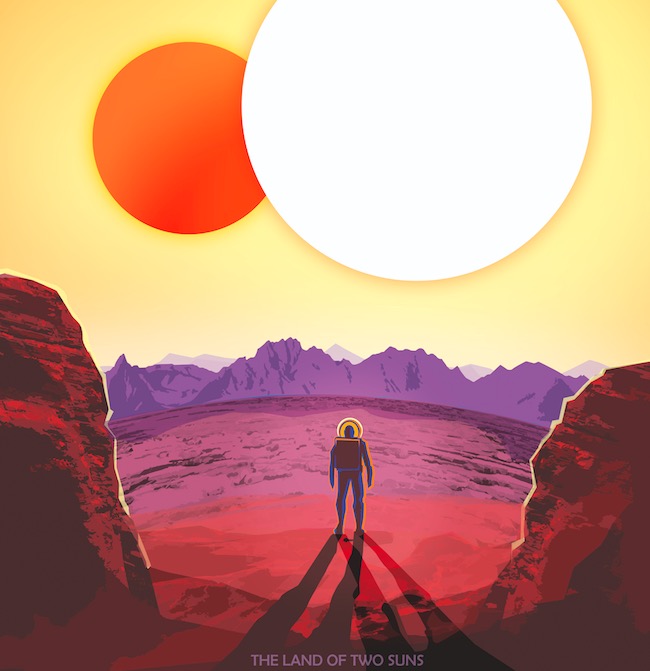NASA Made Some Beautiful Space Tourism Posters for Those Exoplanets They Keep Finding
"Then why am I still on this garbage planet?" -Carolyn Cox, 2015

NASA’s Kepler mission has found its 1,000th alien world! Celebrate by taking a look at these snazzy ads NASA put out for some of those giant celestial marvels and wonder what in the heck we’re still doing down here on this rock!
It seems like every day we hear about a new potentially habitable planet that’s been found, but it’s still important science. In fact, it’s all especially amazing considering the Kepler space observatory’s aiming system broke, and it has only been able to keep finding new planets by literally balancing itself on light from the sun.
Just yesterday, it was announced that Kepler found 8 more exoplanets—planets outside of our solar system—and that brought its total up to 1,000 exoplanets.
These amazing worlds are just a few examples of the many Kepler and its planet-hunting contemporaries have located (captions underneath or click to enlarge):
Twice as big in volume as the Earth, HD 40307g straddles the line between “Super-Earth” and “mini-Neptune” and scientists aren’t sure if it has a rocky surface or one that’s buried beneath thick layers of gas and ice. One thing is certain though: at eight time the Earth’s mass, its gravitational pull is much, much stronger.
Like Luke Skywalker’s planet “Tatooine” in Star Wars, Kepler-16b orbits a pair of stars. Depicted here as a terrestrial planet, Kepler-16b might also be a gas giant like Saturn. Prospects for life on this unusual world aren’t good, as it has a temperature similar to that of dry ice. But the discovery indicates that the movie’s iconic double-sunset is anything but science fiction.
Kepler-186f is the first Earth-size planet discovered in the potentially ‘habitable zone’ around another star, where liquid water could exist on the planet’s surface. Its star is much cooler and redder than our Sun. If plant life does exist on a planet like Kepler-186f, its photosynthesis could have been influenced by the star’s red-wavelength photons, making for a color palette that’s very different than the greens on Earth. This discovery was made by Kepler, NASA’s planet hunting telescope.
Cool. Where do I buy tickets? I’m pretty done with Earth lately.
(via Gizmodo and Space.com, images via NASA/JPL-Caltech)
Are you following The Mary Sue on Twitter, Facebook, Tumblr, Pinterest, & Google +?
Have a tip we should know? tips@themarysue.com